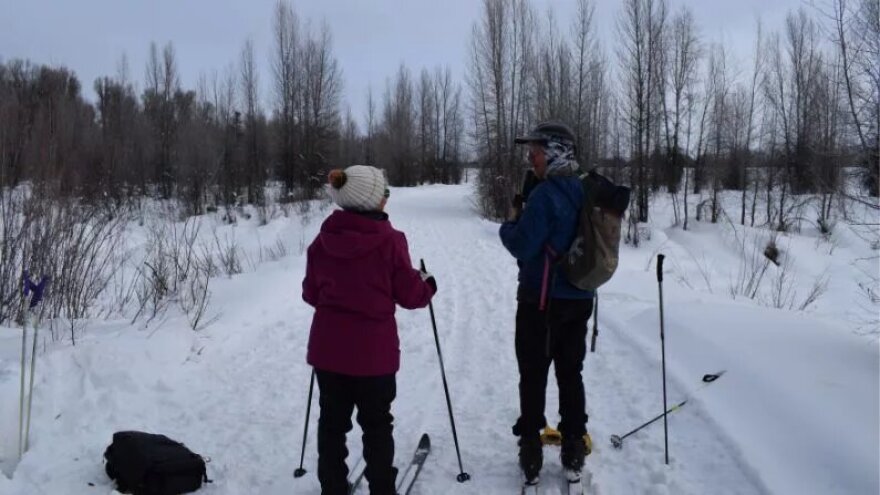Len Carlman and Laurie Bay cross country skied through the cottonwoods south of Wilson, near the Snake River.

They had just spotted one moose eating the shrubs about a hundred yards away.
“Moose on the move, walking slowly, going from one patch of willows or small cottonwoods to another,” Carlman said. “Let’s go see what’s going on.”
Carlman and Bay were two of over a hundred volunteers spread out through the county last Saturday participating in the Jackson Hole Wildlife Foundation’s annual Moose Day.
The Game & Fish Department counts moose every year from a helicopter, but these volunteers travel on cross country skis and snowshoes, often in more developed areas, to find moose the agency can’t see.
Carlman and Bay edged closer to the moose, keeping their distance.
“Winter is a period of slow starvation for moose,” Carlman said. “They’re just losing calories and body fat. And they don’t need any more hassle than they already get from the hardships of winter. We’ll get a little closer, but they’ll come a time when we know that’s enough.”
Tracking the Jackson herd
Last year, volunteers and Game & Fish found 326 moose. This is about 70% smaller than the herd size just a few decades ago.

Wildlife biologist Aly Courtemanch said that’s due to several factors: habitat loss, an expansion of predators, vehicle collisions and climate change. In the winter, moose can become stressed at temperatures above 23 degrees Fahrenheit.
“Moose really evolved in those northern latitudes, and they don’t do very well in warm temperatures,” Courtemanch said in a presentation preparing volunteers for Moose Day.
Population counts help the department make decisions about hunting tags and wildlife crossings. Knowing where moose are congregating also informs the agency’s comments on proposed developments.
‘A simple thing in a simple place’
Volunteers like Carlman and Bay also looked for signs of disease, like hair loss or missing tips of the ears, which have been observed in the local herd.
Back south of Wilson, Bay recorded her observations on the nearby moose, which had a thick fur coat.

“They don’t always look so good in the winter,” Bay said. “[He] looks good, which is great.”
She said it’s the people and the impact of the work that brings her out to Moose Day again and again.
“I mean this is a simple thing in a simple place that matters,” Bay said. “You see the results of your work and that’s a rare thing I think anymore.”
Volunteers ended up counting about 112 moose over the weekend, though numbers are still being finalized. Game & Fish will release the official tally sometime next week.








